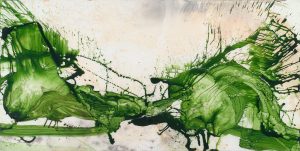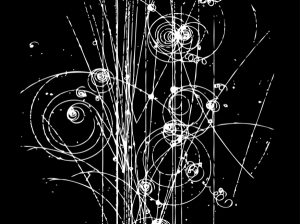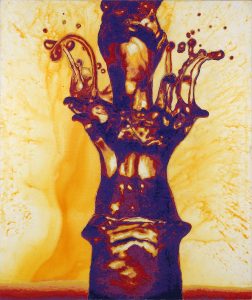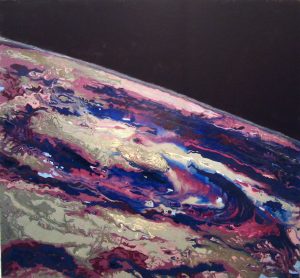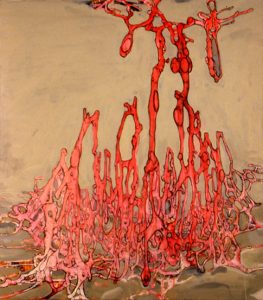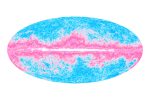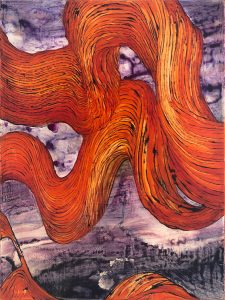
Fran Kaufman: catalog essay for “Dynamic Equilibrium”
Imagination is more important than knowledge. For knowledge is limited to all we know and understand, while imagination embraces the entire world.
—Albert Einstein
Walking into Jonathan’s studio one feels an immediate flow of energy: the colors are intense, the strokes are bold, there is an immediate sense of purpose and exploration. Hung high on the non-working wall are two dream-like paintings of the Large Hadron Collider at CERN in Switzerland, a miraculous feat of cooperative science that contains the world’s largest and most powerful particle accelerator. Facing them are large images painted on mylar inspired by particle theory, a dynamic imagining of the interactions of minuscule particles rooted in the specific mathematical formulas that govern their actions.
